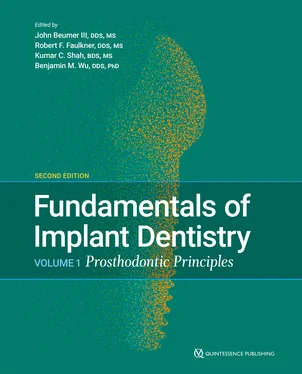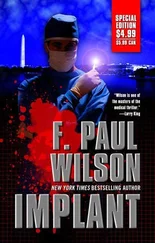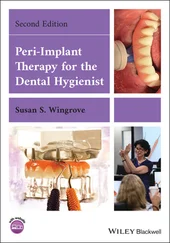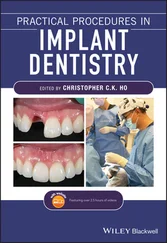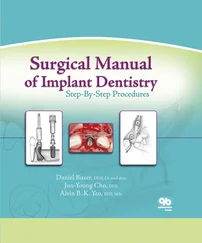The impetus for this supplement has been the recent mandate by CODA (Commission on Dental Accreditation of the American Dental Association) to train prosthodontic residents in the basic fundamentals of implant surgery. Furthermore, throughout the book, we have tried to present clinical follow-ups of patients displayed in the first edition, some over 30 years postdelivery.
We continue to emphasize the importance of considering conventional prosthodontic methods and presenting these to the patient. As in the first edition, we indicate when conventional approaches (tooth-supported fixed dental prostheses, RPDs, and restoring diseased teeth with endodontic therapy and conventional restorations) should be considered. Frequently, conventional treatments are just as effective in restoring form and function (and sometimes more so), are more time efficient, and more often than not are more cost effective than implant options.
We continue to believe that most patients are best served with an interdisciplinary effort. Some patients present with relatively simple problems and can be handled by a solo practitioner (hence, the addition of the chapter devoted to implant surgery for nonsurgically trained dentists). However, most patients present with significant prosthodontic complexities such as occlusal plane discrepancies, malposed teeth and unfavorable jaw relations, periodontal compromise of existing dentition, and significant bone and soft tissue defects associated with the potential implant sites, especially in the esthetic zone. Achieving sustainable outcomes for such patients requires the prosthodontist or restorative dentist to develop close professional interaction with oral and maxillofacial surgeons, periodontists, orthodontists, and endodontists as well as dental technicians and staff associated with biomedical modeling centers.
An important objective of this edition is to reinforce the basic principles of fixed and removable prosthodontics. In order to develop an appropriate level of expertise in implant prosthodontics, the clinician must have a firm foundation in conventional fixed and removable prosthodontics. Therefore, topics such as occlusal schemes used for the various types of implant prostheses, as well as designing proper resistance and retention form into customized abutments where the prosthesis is to be retained with cement, the principles of smile design and esthetics, and other topics pertinent to the fundamentals of prosthodontics are emphasized and discussed as needed.
ACKNOWLEDGMENTS
John Beumer III
As in the first edition, I would like to personally thank my mentors: Dr Sol Silverman Jr, Distinguished Professor of Oral Medicine, University of California, San Francisco (UCSF); Dr Thomas A. Curtis, Professor of Prosthodontics, UCSF, and one of the fathers of modern Maxillofacial Prosthetics; and Dr F. J. Kratochvil, Professor of Prosthodontics, University of California, Los Angeles (UCLA), and the developer of the RPI system of removable partial denture design. They were selfless individuals and wonderful role models who are rightly considered giants in their respective disciplines. Their personal integrity, commitment to excellence, and enthusiasm for education and research has been inspiring for me and many others in our profession. I would also like to thank Dr Henry Cherrick, Professor of Pathology and Dean Emeritus, UCLA School of Dentistry. His friendship and mentorship during my early years at UCLA were invaluable, and his leadership and vision as Dean led to the development of robust education and research programs in implant dentistry at UCLA. Also, his encouragement and support were indispensable to the development of the Jane and Jerry Weintraub Center for Reconstructive Biotechnology, Division of Advanced Prosthodontics, UCLA. Last, I would like to extend my thanks to Mr Hiroake Okabe, CTD, who for 20 years directed our Dental Laboratory and Dental Laboratory School devoted to Implant Prosthodontics. His knowledge of implant prosthodontics was astounding, and a substantial amount of his work and that of his students still survives in this edition. The quality of the implant program at UCLA was in large measure due to his expertise and commitment to excellence.
Robert F. Faulkner
First and foremost, I dedicate this book to my parents, Bob and Betty Faulkner. My mom’s love and encouragement through the years of her life will remain with me and serve as a constant reminder to set goals and to reach for them with all of my being, and my dad has served as an incredible role model and is truly the man I have always admired and aspired to emulate the most. He has continued to believe in my abilities, even when I doubted myself. The completion of this second book was in no small part due to the work ethic that they have instilled in me. To my children, Lauren and Rob, with whom God blessed me, for their love and understanding; I continue to be amazed at the individuals they are becoming and I am honored to be their father. I would also like to acknowledge my coeditors. They dedicated themselves to a level of excellence in compiling this book and are a reflection of the level of commitment that we have strived to achieve in our profession of prosthodontics. There are several other individuals who have shaped my life’s journey, and they, too, have given much to develop my path toward the culmination of these books. I would like to express my sincere gratitude to these mentors: Dr Wayne Payne, Professor Emeritus, Ball State University, Department of Health Science and Physiology, whose encouragement allowed the completion of my master’s thesis and helped develop an interest in teaching; and Dr Julian Woelfel, Professor Emeritus in Prosthodontics, and Dr Wayne Campagni, Professor Emeritus, The Ohio State University, College of Dentistry, who both guided my early development in prosthodontics. These two individuals have helped shape many prosthodontists’ careers, and it has been my honor to be influenced by their mentorship. Dr Theodore Berg Jr, Professor Emeritus, UCLA School of Dentistry, remains one of my most cherished mentors in prosthodontics. His careful way of teaching and encouraging students to excel was unparalleled, and he has remained an inspiration to me through my years in private practice and continues to be a constant reminder as to the true meaning of being a teacher. Finally, I would like to thank the countless friends and colleagues who have worked with me and have encouraged and been accommodating of my efforts throughout these many years. Without their support, these books would have only been a dream.
Kumar C. Shah
I would like to thank my coeditors for the opportunity to engage with them on this enormous task. Their friendship and support have been invaluable throughout this process. While receiving a strong foundation as a dental student at the National University of Singapore (NUS), Faculty of Dentistry, my initial interest in prosthodontics stemmed from two individuals: Dr Chew Chong Ling and Dr Keson Tan, both Professors at NUS. They both were extremely encouraging in the pursuit of graduate education. Two other individuals had a big impact on my professional life during my residency at The Ohio State University, College of Dentistry—Dr Wayne Campagni and Dr Ernest D. Svensson, Professors Emeritus, The Ohio State University. Their dedication to prosthodontic education and their passion had a great deal of influence on my early career. Their exemplary talents and patience have been a motivation for my career in education. I would also like to thank Dr Sreenivas Koka for his friendship and mentorship. He has been wonderful as a role model and someone to discuss ideas and concepts to challenge the status quo in dentistry.
Benjamin M. Wu
Words cannot express my deepest appreciation for the selfless generosity of my mentors who opened doors to the world that I know today. Joel Cohen (University of the Pacific) infected me with the research bug, letting me run electrophoretic mobility experiments between casting gold crowns. Colonel Ryle A. Radke (UCSF) stimulated my lifelong devotion to prosthodontics by letting me shadow him. The Harvard pros- thodontics faculty taught me the art, science, and limitations of prosthodontics. Edwin J. Riley (Harvard) showed me how to be an innovative prosthodontist and better person (still trying), and encouraged me to try the pilot Harvard/Massachusetts Institute of Technology (MIT) program that Ichiro Nishimura (Harvard) created. The MIT materials science faculty taught me how to think top-down and bottom-up with engineering fundamentals. Michael J. Cima (MIT) taught me how to solve problems with transdisciplinary creativity and scientific rigor, and encouraged me to turn a homemade 3D printer into a doctoral thesis. John Mackenzie (UCLA) recruited me to UCLA Engineering and gave me the once-in-a-lifetime opportunity to build the Department of Bioengineering. Ichiro Nishimura, John Beumer, and the rest of the UCLA Advanced Prosthodontics faculty welcomed me into their renowned division, gave me the key to the Weintraub Center, and allowed me to decorate both with engineering flavor. The journey was made far more meaningful by the countless colleagues, collaborators, students, residents, postdocs, visiting scholars, technicians, and staff members whose devotion to excellence was most inspiring.
Читать дальше
